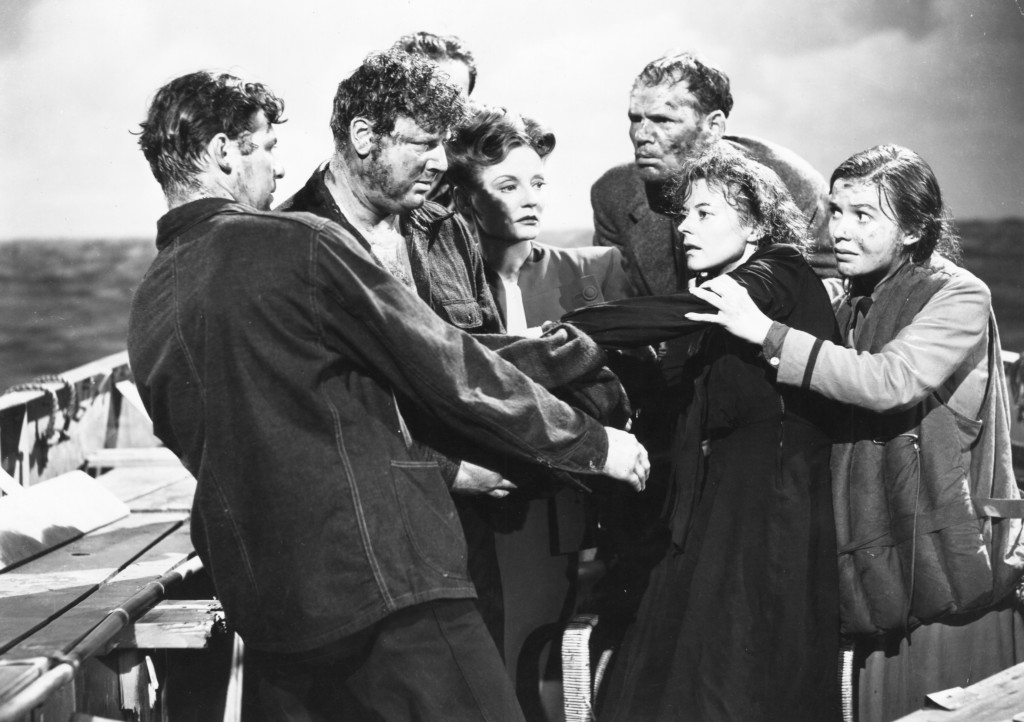Lifeboat Review
Based on a script by John Steinbeck Lifeboat at first appears on the surface (pun purely accidental) to be a piece of stunt filmmaking, an attempt to do something that may seem impossible. To set an entire feature film in a boat and, barring one establishing shot, and never move from the boat in question must have seemed like lunacy in 1944 and an act of directorial masochism.
As with many of Hitchcock‘s films though this conceptual conceit masks a greater depth (the puns are honestly very hard to avoid) and Lifeboat is ultimately a deeply intelligent and sharply observed film about important moral/ethical quandaries. There is also a line in political commentary that runs throughout the film and its position as a film made in 1944, five years into World War Two, makes the events depicted all the more intriguing for a viewer to wrestle with and dissect. Consider this exchange for instance,
“A guy can’t help bein’ a German if he’s born a German, can he?”
“Neither can a snake help being a snake if he’s born a rattlesnake! That don’t make him a nightingale!”
It’s easy to see that sort of sentiment as being simply WWII propaganda supporting the war effort but just because it is the second character’s comment that ends the conversation this does not been that this is the simple point that Hitchcock and Steinbeck are trying to make. The subsequent scenes and the ultimate fate of the German in question do more to problematise this exchange than they do to affirm it. The fact that the film has been considered as British Jingoism by some and Nazi propaganda by others goes some way to illustrating that reading the film too simply may be a serious mistake.
Despite the depth of the thematic concerns in Lifeboat one cannot ignore the technical achievements also contained within. Crafting a film entirely set within this one, confined location is a magic trick from Hitchcock that is worthy of high commendation. The extras included on this release include a making of and a discussion of the film between Hitchcock and Francois Truffaut and despite both being interesting additions to the release I can’t help but wish there was something more substantial and altogether ‘nerdier’ on the disc, highlighting the exact way in which Hitchcock achieved what seems almost unachievable.
One modern example of confined filmmaking, Rodrigo Cortes‘ Buried, led Bleeding Cool’s own Brendon Connelly to put together a feature with Cortes explaining exactly how to achieve this feat and I can recommend giving it a read as it provides insights into the challenges Hitchcock faced too. Some magic tricks somehow seem even more impressive when one discovers how they are done.
